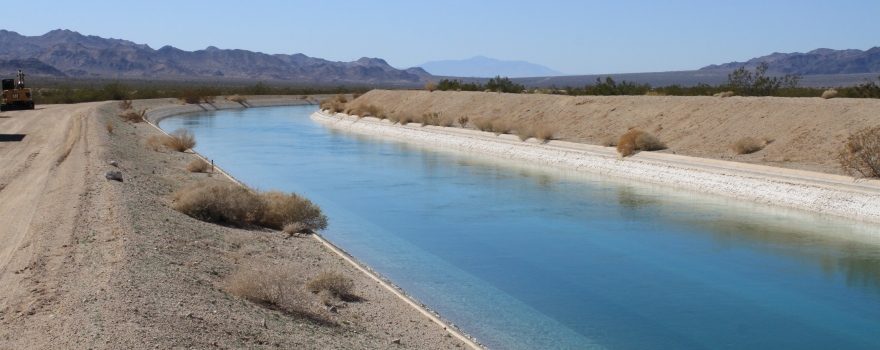
 The Metropolitan Water District owns and operates the 242-mile Colorado River Aqueduct, which stretches Lake Havasu, Arizona to its terminal reservoir at Lake Mathews near Riverside. The Colorado River Aqueduct is one of three water systems that deliver imported water to Southern California.
The Metropolitan Water District owns and operates the 242-mile Colorado River Aqueduct, which stretches Lake Havasu, Arizona to its terminal reservoir at Lake Mathews near Riverside. The Colorado River Aqueduct is one of three water systems that deliver imported water to Southern California.
Construction of the aqueduct
Shortly after the Los Angeles Aqueduct was completed, booming population growth coupled with drought sent Southern California once again looking for additional water resources. In 1925, the Los Angeles Department of Water and Power was established, and voters approved $2 million in bonds for the engineering of the aqueduct. The Metropolitan Water District was formed in 1928 under special legislation to provide a way for thirteen Southern California cities to join together to build the aqueduct.
 In 1931, voters approved $220 million in bonds to build the project with construction beginning the next year. During its eight year construction period, the project employed 35,000 people, making it Southern California’s largest work opportunity during the Depression. The aqueduct was completed in 1941, and was the longest water conveyance facility of its kind at the time.
In 1931, voters approved $220 million in bonds to build the project with construction beginning the next year. During its eight year construction period, the project employed 35,000 people, making it Southern California’s largest work opportunity during the Depression. The aqueduct was completed in 1941, and was the longest water conveyance facility of its kind at the time.
Path of the aqueduct
The system begins at Parker Dam, which spans the Colorado River just below the confluence of the Colorado and Bill Williams rivers. The dam forms 45-mile long Lake Havasu which functions primarily as a forebay and desilting basin for Metropolitan’s aqueduct system, as well as providing flood protection for downstream communities, regulating the river for power generation, and functioning as a popular recreation spot. 
From the Whitsett Pumping Plant at the edge of Lake Havasu, water travels through 63 miles of canals, 92 miles of tunnels, 55 miles of conduit, and 144 underground siphons. There are five pumping plants along the way which lift the water a total of 1600 feet to deliver the water to Southern California.
Metropolitan Water District
Originally, Metropolitan Water District was formed with thirteen cities; it has since added another thirteen members. Today, the Metropolitan Water district is the nation’s largest provider of treated drinking water, serving all or a portion of the water supply to 19 million Southern Californians over a 5200 square-mile service area.
Historical picture show
For more information …
- Click here to visit Metropolitan Water District online.
- Click here to visit Metropolitan’s Colorado River Aqueduct page.
- Click here for the Wikipedia page for the Colorado River Aqueduct.
Click here to return to the California Water Infrastructure main page.
This page was written by Chris “Maven” Austin on July 5, 2015.


